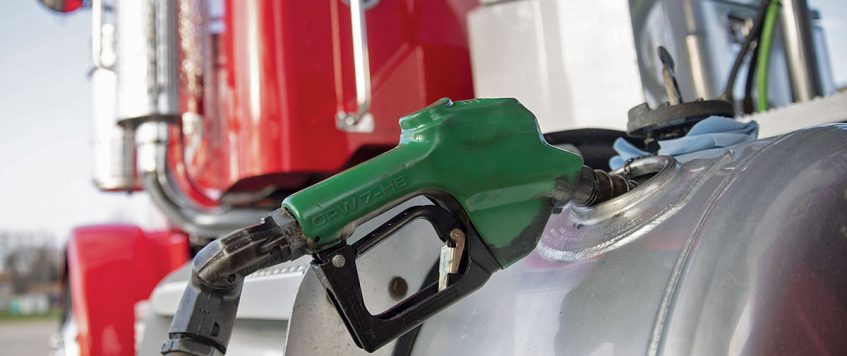-
02
Sep
9-Week Decline in DOE/EIA Diesel Price Ends on Big Jump
The benchmark Department of Energy/Energy Information Administration diesel price moved up Monday after a nine-week run of decreases.
Compared to recent gains in the price of ultra low sulfur diesel on futures and wholesale markets, the increase of 20.6 cents a gallon to $5.115 seems almost puny. For example, since a settlement Aug. 15 of $3.4403 per gallon, ULSD on the CME commodity exchange, through Friday’s settlement of $4.0076 a gallon, increased by more than 56.7 cents a gallon.
Even with a 20-cent-plus increase, the higher number was just the fourth-largest weekly increase in the volatile market that began with the lead-up to Russia’s invasion of Ukraine. But after nine weeks of declines that totaled more than 90 cents, a more than 20 cents reversal in one week is significant.
The DOE/EIA weekly average retail diesel is the basis for most fuel surcharges.
In a reminder that for now at least, it’s the world natural gas market that is driving diesel as much as if not more than crude markets, the price of ULSD on CME Monday fell 9.77 cents a gallon, a decline of 2.44% even as West Texas Intermediate crude was rising 4.24% and global benchmark crude Brent rose 4.06%.
The stark difference between the two is that crude was driven by several factors Monday, including troubling news out of Iraq, where the resignation from politics of Shiite clerical leader Muqtada al-Sadr resulted in clashes inside the country’s presidential palace. Iraqi factions have not been able to agree on a government for more than a year, and what has been described as a caretaker government is nominally running the country.
Iraq is the second-largest producer in OPEC after Saudi Arabia. In July, according to S&P Global Commodities, Iraqi production was 4.45 million barrels a day. In February 2020, just before the pandemic, it was 4.65 million barrels a day. Although it is down from then, there are other countries that have seen their output fall by more and the possibility of what is being whispered as the start of a civil war in Iraq was a key topic of discussion in oil markets Monday.
For diesel, the link between it and the global price of natural gas has been evident in recent weeks. Diesel can be substituted for natural gas in numerous applications, and as fears of a Russian cutoff of natural gas to Europe have grown, the world price of natural gas, as measured in such benchmarks as the Dutch TTF natural gas price, has soared to record levels.
But over the weekend, news reports said Germany’s economy minister, Robert Habeck, said gas storage in that country is expected to be 85% full next month, ahead of the target originally set for October.
That helped lead to a 20% decline in the TTF price, with reaction seen in the diesel sell-off as well, particularly since it was so diametrically different from the climbing crude market.
Those diverging markets helped drop the ULSD-to-Brent spread to roughly $1.40 a gallon, a decline of about 20 cents from Friday. Even at $1.40, the spread is far out of whack with normal levels. A year ago, it was about 40 cents a gallon.
Another factor in the easing of diesel prices relative to crude: positive news out of the huge Whiting, Indiana, refinery operated by BP. It was closed last week after an electrical fire, taking the 435,000-barrel-a-day refinery — one of the country’s biggest — offline.
By: John Kingston / FreightWaves

